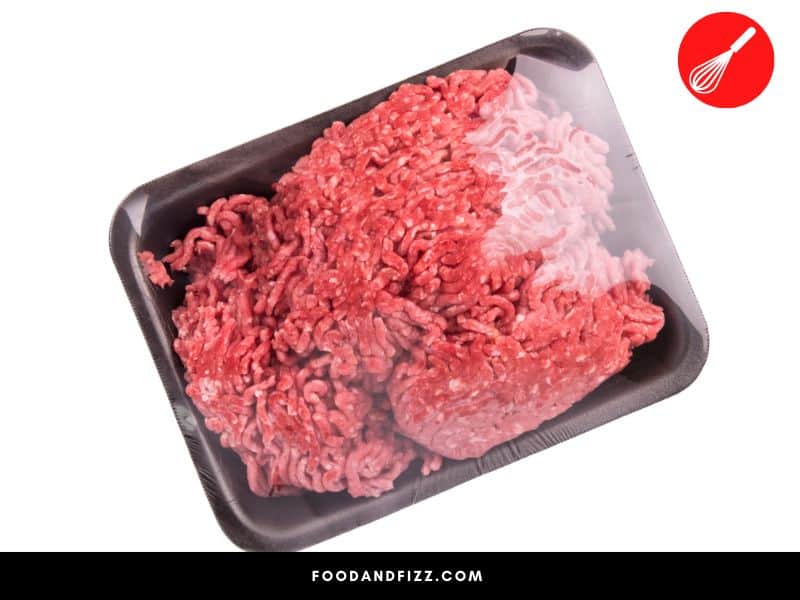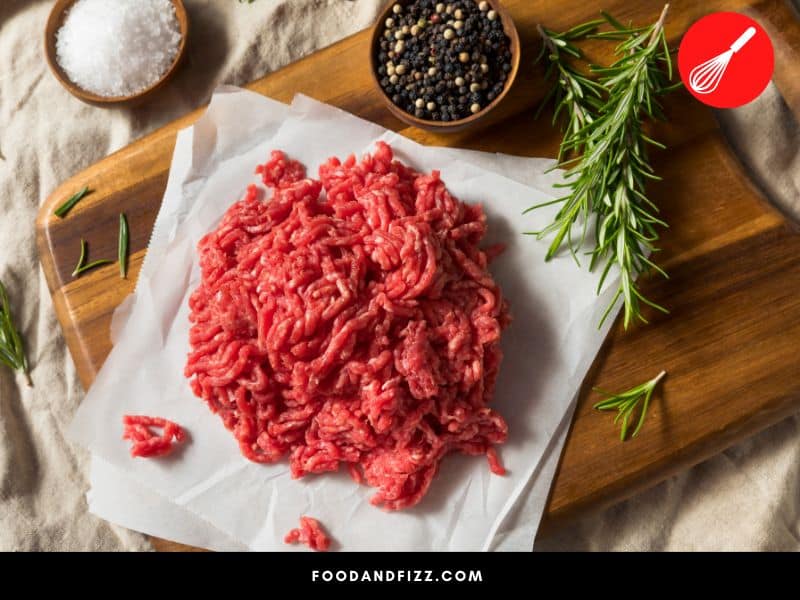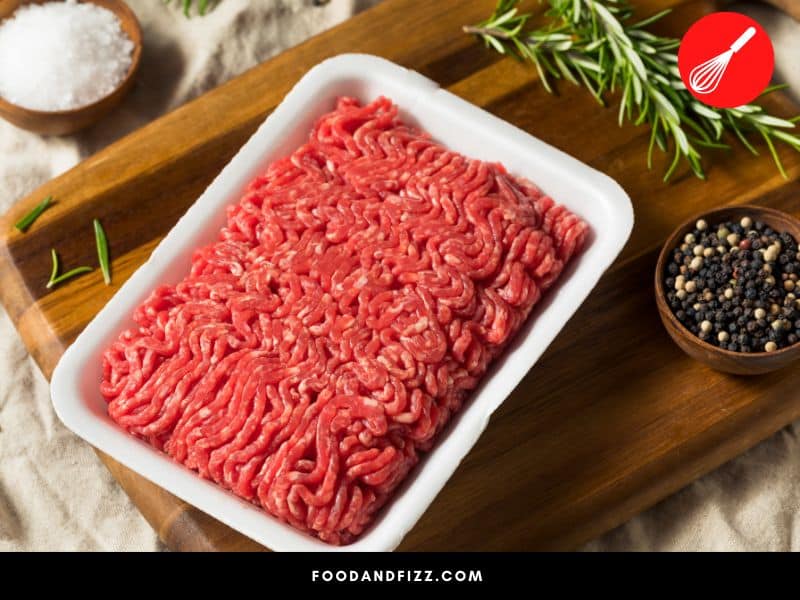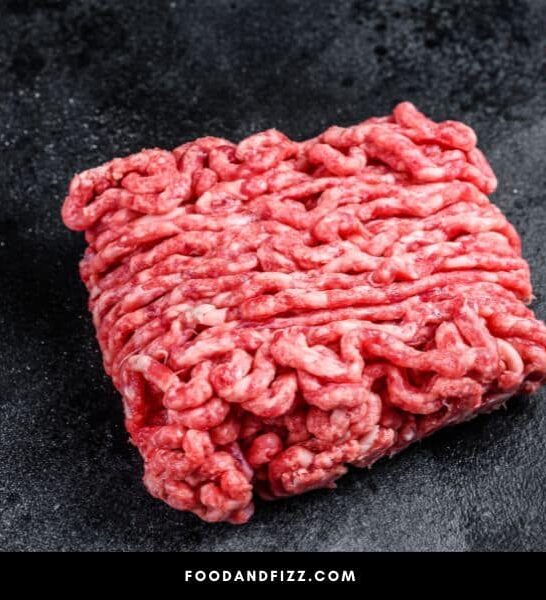Is It Ok Using Food Coloring to Make Ground Beef?
The fact is, we humans eat with our eyes before we eat with our noses before we eat with our mouths. In short, if the food doesn’t look good, we are unlikely to smell it. If the food item neither looks nor smells good, the possibility that we will happily stuff it into our mouths is close to zero.
Savvy food and beverages entrepreneurs take advantage of this knowledge to entice us into buying their wares by ensuring that their products are as good-looking as possible. Thus, orange juice looks orangey, cabbages look green and vibrant, and beef looks pink and healthy.
Often, what we see is a “manufactured reality”, and sellers often use food coloring to enhance their merchandise. In the case of ground beef, is that okay?
Is It Ok Using Food Coloring to Make Ground Beef?
It is not okay to use food coloring to make ground beef. The United States Department of Agriculture strictly forbids the addition of food coloring to ground beef and routinely inspects all ground beef products looking for this and any number of possible other infractions.

Ground Beef’s Natural Color
One of life’s little oddities is that we humans get easily misled by appearances, which is somewhat unfortunate, seeing how much value we place on the way things look.
For example, we often equate beef‘s freshness with its redness, whereas, in fact, with certain caveats, which I’ll explain later, the redder the ground beef, the longer it has been exposed to oxygen, and therefore the less “fresh” it is!
Mankind obtains beef from the muscles of oxen, and it is pertinent to note that in its natural state, beef has a purple color.
(Before beef gets ground up, it is often possible to see a purplish tinge on the edges of cuts of meat, especially on the edges of freshly cut chunks. This color appears where the flesh’s unaltered color comes through.)
However, once man has tampered with the beef and ground it up, an important beef protein called “myoglobin” gets churned up with the rest of the flesh and, in the process, becomes exposed to oxygen in the air.
As long as the oxygen in the air reaches a 20% level or higher, the myoglobin oxidizes (chemically bonds with oxygen) and gains a rich red color.

If you’ve got your thinking cap on, you might begin to think to yourself, “Hmm. My blood is red because of oxygen, rust is red because rusted metals have oxidized due to oxygen, and now the myoglobin stuff makes ground meat red because of oxygen. Maybe oxidation makes things red?”
Yes, wiseacre, if that is what you said, you’re absolutely spot on. Where ground beef is in contact with the air, and there is sufficient oxygen in that air, the meat will take on a rich red color, which consumers equate to “freshness”.
The Redness of Ground Beef Does Not Necessarily Indicate Freshness
There are a number of ways that ground beef producers can enhance the redness of their product without running foul of the US Department of Agriculture’s ban on food coloring for ground beef.
MAP (Modified Atmosphere Packaging)
This workaround involves packaging the ground beef in an airtight container with a specially modified atmosphere that is, among other gases like carbon monoxide, carbon dioxide, and nitrogen, rich in oxygen.
As explained earlier, the myoglobin protein in the beef oxidizes to a rich red, and the sealed atmosphere helps maintain a hostile environment for bacteria that cause spoilage. In effect, MAP keeps ground beef redder and fresher for longer.

Sodium Nitrate
The chemical substance sodium nitrate is a chemical agent that mediates between myoglobin, oxygen, and other compounds present in ground beef. Sodium nitrate helps myoglobin bind to oxygen, increasing the meat’s redness.
At the same time, sodium nitrate binds to other substances in ground beef, which means that the sodium nitrate stays present in the meat for longer. As a consequence, when present, sodium nitrate causes ground beef to appear redder for longer, irrespective of freshness.

Coloring Ground Beef Outside the USA
In the European Union (EU), coloring ground beef artificially with food coloring is also strictly forbidden, but there is a fundamental difference between how the US and the EU view the use of MAP on ground beef.
The US views MAP as a way of “stabilizing” ground beef’s color. I think their argument is founded on pretty solid ground because the MAP does not enhance the color of ground beef; it merely keeps it where it naturally occurs, which seems fair enough to me.
The EU, on the other hand, sees artificially maintaining the color of the meat as something of a shady, sly move, if not an outright cheat, for which reason the EU has banned the practice. Their argument (which I find hard to traduce) is that MAP-protected ground beef can look healthy and fresh long past when it is safe to eat.

In the end, “you pays your money, and you takes your choice”, as they used to say in the UK. Still, I note that even in the US, some people are a bit leery of unlabelled MAP and/or carbon monoxide packaging, and some activist groups took the government to court and fought a years-long battle to label all MAP or carbon monoxide packaged meat and poultry products.
I sometimes wonder why food producers would fight something this innocuous and benign, since no one was suggesting that we label MAP-packaged products “dangerous” or “unsafe”.
Perhaps food manufacturers saw this as the thin edge of the wedge? If so, that’s unfortunate because I, for one, remain firmly in favor of giving everyone the information and freedom of choice to make their own informed decisions.
Frequently Asked Questions to Is it Okay Using Food Coloring to Make Ground Beef?
Can Producers Add Food Coloring to Beef?
Producers can–and do–add food coloring to beef products. Producers add food-grade carmine (FD&C Red #40) to hot dogs, sausages, deli meats, and other processed beef items to give it that supposedly “healthy” blush of red ” freshness”. On the other hand, as noted earlier, producers are expressly prohibited by law from adding food coloring to ground beef. That said, I have seen some suspiciously weird-looking pink ground beef, and I wouldn’t mind betting my bottom dollar that someone, somewhere, had done something to the ground beef.
What Color Is Ground Beef When It Is Going (or Has Gone) Bad?
Initially, ground beef takes on a grayish color, at which stage it is safe to say that it is definitely no longer fresh, usually between three and five days in the fridge. In the next phase of decomposition and spoilage, ground beef turns a horrid greenish-brown; the greener, the worse for wear the meat. At this point, ground beef will smell as bad as it looks and will be positively detrimental to your health to consume it even well cooked (because the toxins in it won’t disperse due to heat).
Afterword: Is It Ok Using Food Coloring to Make Ground beef?
It is not okay to use food coloring to make ground beef, at least not in America, where the Department of Agriculture has specifically banned the practice.
Still, clever purveyors can get around the restriction by dint of a variety of means which keeps them within the ambit of the law.

